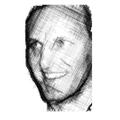Cited By
View all- Guo DMin HYan G(2023)SPSOC: Staged Pseudo-Spectral Optimal Control Optimization Model for Robotic Chinese CalligraphyIntelligent Robotics and Applications10.1007/978-981-99-6492-5_36(416-428)Online publication date: 16-Oct-2023
- Berio DLeymarie FAsente PEchevarria J(2022)StrokeStyles: Stroke-based Segmentation and Stylization of FontsACM Transactions on Graphics10.1145/350524641:3(1-21)Online publication date: 28-Apr-2022
- Wu RChao FZhou CHuang YYang LLin CChang XShen QShang C(2022)A Developmental Evolutionary Learning Framework for Robotic Chinese Stroke WritingIEEE Transactions on Cognitive and Developmental Systems10.1109/TCDS.2021.309822914:3(1155-1169)Online publication date: Sep-2022
- Show More Cited By


